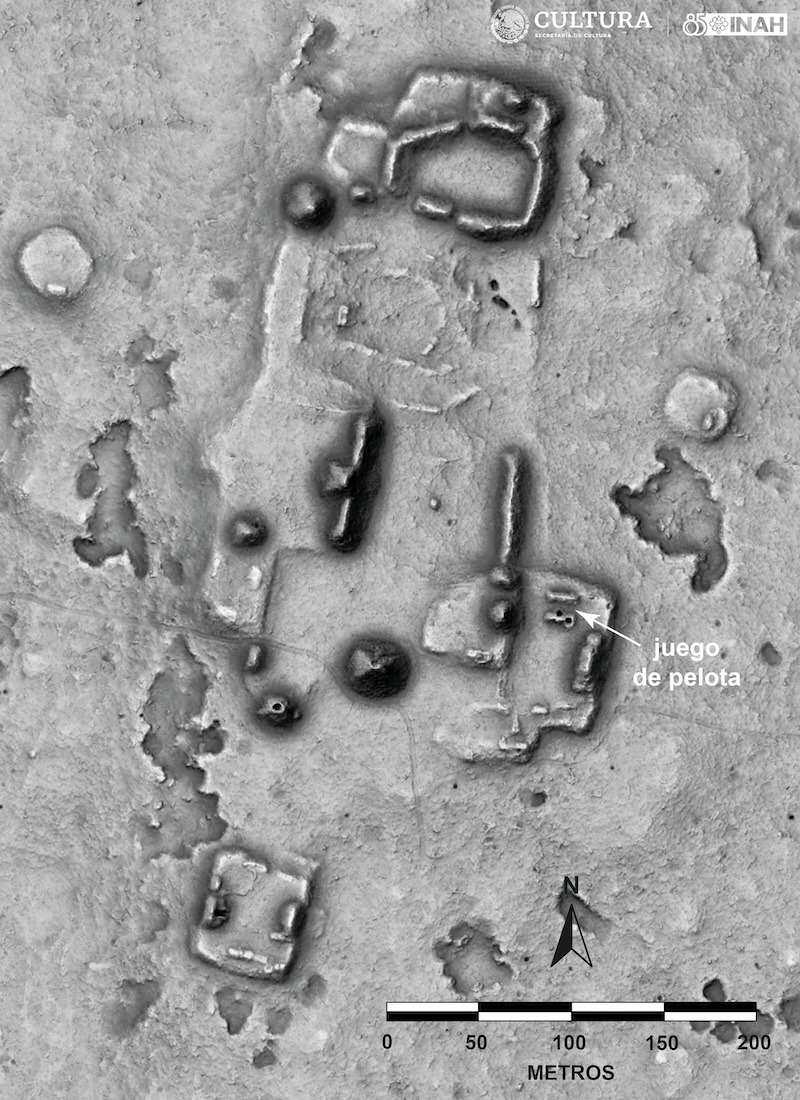In a quiet pocket of Mexico, archaeologists have used LiDAR imaging to reveal long-lost structures built by the Maya culture centuries ago. Among the discoveries are grand pyramids and a civic-ceremonial center, plus a subterranean structure found beneath a Maya ball court.
The recent archaeological work was carried out by Mexico’s National Institute of Anthropology and History (INAH) in central Campeche, a state that’s famed for its ancient Maya ruins. The new project focused on a lesser-studied forest called the Balam Kú Biosphere Reserve, which spans approximately 140 square kilometers (54 square miles).
The area is marked by tough terrain that’s tricky to farm, so unsurprisingly it’s home to fewer ancient settlements and structures compared to neighboring regions. The sites are also more modest in style, featuring minimal architectural decoration and engravings.
“The inevitable impression is that the Maya culture of this region that we have just explored was noticeably less elaborate than that of Petén, to the south, and the regions of Chenes and Chactún, to the north and east,” Ivan Šprajc, an archaeologist from the Research Center of the Slovenian Academy of Sciences and Arts, said in a statement.
Nevertheless, the researchers were able to make several significant discoveries thanks to LiDAR, a remote sensing technology that uses lasers to reveal hidden structures by penetrating dense vegetation and capturing precise topographical data.

LiDAR images show an unusual substructure located under the site of a Maya ball court.
Image credit: INAH
One important find was a group of structures near Nadzcaan, a site first discovered in the 1990s, featuring a main plaza with a pyramid construction and a drainage channel.
Another notable site featured a large building that stood 13 meters (43 feet) tall and likely served as a civic-ceremonial center. This settlement, they suspect, must have held some “socio-political importance” given the building’s stature. In the eastern part of this site, they also found a ball court that appears to sit on top of a substructure possibly from the Early Classic period (200-600 CE).
Lastly, a third site consisted of several structures concentrated on a natural hill. Next to the main plaza stood a 16-meter (52-foot) high pyramid surrounded by several “offerings”, including a flint point, ceramic remains, and an animal leg fragment, perhaps of an armadillo or large rodent.
This settlement dates to the Late Postclassic period (1250-1524 CE) during the last few centuries before the Americas were turned upside-down by the arrival of the Spanish. It also shows how human cultures managed to persist long after the disintegration of complex political entities in the Central Lowlands at the end of the Classic period.
In recent years, LiDAR technology has revolutionized the field of archaeology. It’s proved to be especially useful in the tropical Americas where the relentless rainforests have swamped the ruins of many pre-Columbian civilizations, including highly complex settlements of enormous size and significance.
One recent study indicated there could be as many as 10,000 archaeological sites hidden throughout the Amazon basin alone, shutting down the idea that the region was sparsely populated before it was colonized by Europeans.
Source Link: Subterranean Maya Structure And Hidden Pyramids Found In Mexico's Tropical Forests